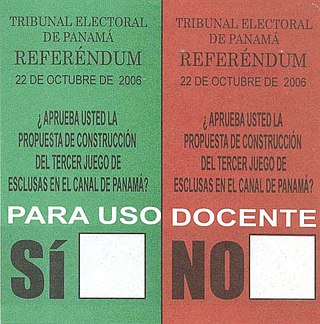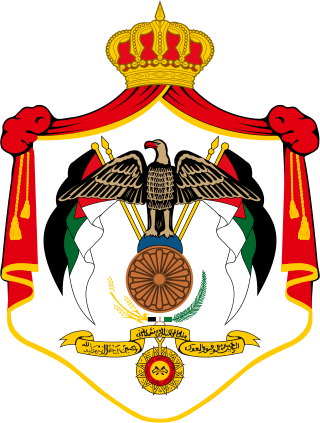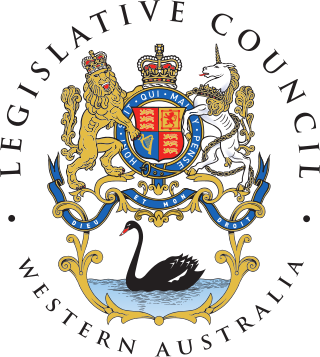
Party-list proportional representation (list-PR) is a subset of proportional representation electoral systems in which multiple candidates are elected through their position on an electoral list. They can also be used as part of mixed-member electoral systems.

The single transferable vote (STV), sometimes known as proportional ranked choice voting (P-RCV), is a multi-winner electoral system in which each voter casts a single vote in the form of a ranked-choice ballot. Voters have the option to rank candidates, and their vote may be transferred according to alternate preferences if their preferred candidate is eliminated or elected with surplus votes, so that their vote is used to elect someone they prefer over others in the running. STV aims to approach proportional representation based on votes cast in the district where it is used, so that each vote is worth about the same as another.

Voting is a method by which a group, such as a meeting or an electorate, convenes together for the purpose of making a collective decision or expressing an opinion usually following discussions, debates or election campaigns. Democracies elect holders of high office by voting. Residents of a jurisdiction represented by an elected official are called "constituents", and the constituents who choose to cast a ballot for their chosen candidate are called "voters." There are different systems for collecting votes, but while many of the systems used in decision-making can also be used as electoral systems, any which cater to proportional representation can only be used in elections.
Block voting, also known as bloc voting, refers to certain electoral systems where multiple candidates are elected simultaneously. They do not guarantee minority representation and allow a group of voters to ensure that only their preferred candidates are elected. In these systems, a voter can select as many candidates as there are open seats. That is, the voter has as many votes to cast as the number of seats to fill. The block voting systems are among various election systems available for use in multi-member districts where the voting system allows for the selection of multiple winners at once.
The electoral system of Australia comprises the laws and processes used for the election of members of the Australian Parliament and is governed primarily by the Commonwealth Electoral Act 1918. The system presently has a number of distinctive features including compulsory enrolment; compulsory voting; majority-preferential instant-runoff voting in single-member seats to elect the lower house, the House of Representatives; and the use of the single transferable vote proportional representation system to elect the upper house, the Senate.
Norway elects its legislature on a national level. The parliament, the Storting, has 169 members elected for a four-year term by a form of proportional representation in multi-seat constituencies.

The House of Representatives was the lower chamber of Fiji's Parliament from 1970 to 2006. It was the more powerful of the two chambers; it alone had the power to initiate legislation. The House of Representatives also had much greater jurisdiction over financial bills; the Senate could not amend them, although it might veto them. Except in the case of amendments to the Constitution, over which a veto of the Senate was absolute, the House of Representatives might override a Senatorial veto by passing the same bill a second time, in the parliamentary session immediately following the one in which it was rejected by the Senate, after a minimum period of six months.
An electoral district, also known as an election district, legislative district, voting district, constituency, riding, ward, division, electorate, or (election) precinct, is a subdivision of a larger state created to provide its population with representation in the larger state's constituency. That body, or the state's constitution or a body established for that purpose, determines each district's boundaries and whether each will be represented by a single member or multiple members. Generally, only voters (constituents) who reside within the district are permitted to vote in an election held there. District representatives may be elected by a first-past-the-post system, a proportional representative system, or another voting method. They may be selected by a direct election under universal suffrage, an indirect election, or another form of suffrage.
In the study of apportionment, the Harequota is the number of voters represented by each legislator under a system of proportional representation. In these voting systems, the quota is the number of votes that guarantees a candidate, or a party in some cases, captures a seat. The Hare quota is the total number of votes divided by the number of seats to be filled.
There are five types of elections in Slovakia: municipal elections, regional elections, parliamentary elections, presidential elections and elections to the European Parliament. All four types of elections are normally held after fixed periods, although early elections can occur in certain situations. Elections are conventionally scheduled for a Saturday - the polls normally open at 7:00 in the morning and close at 22:00 in the evening. Citizens aged 18 years or older are eligible to vote. Those serving prison sentences for particularly serious crimes, as well as those deprived of legal capacity, including persons with mental disabilities, are denied the right to vote. Voter registration is passive and decentralized with the voter register maintained by municipalities based on the permanent residence register. Voter lists are updated continuously based on municipal records and input provided by state institutions or other municipalities. Voters may verify their data in voter lists, and, if necessary, request correction until the day before election day. On election day, a voter can be added to a voter list upon presenting an identity card with proof of residency. Some 4.4 million voters are registered and valid to vote in the elections. Voters are only able to vote from abroad during the Parliamentary Elections in Slovakia.

Elections in Jordan are for the lower house, known as the House of Representatives, of the bicameral parliament of Jordan, as well as for local elections. They take place within a political system where the King has extensive legislative and executive powers, retaining ultimate political control. The Prime Minister is selected by the King, the PM is then free to choose his own Cabinet. The parliament has quotas: three seats for Circassians and Chechens, nine for Christians and fifteen for women. The electoral system favours rural tribes and those of East Bank origin over urban areas that are primarily inhabited by those of Palestinian descent.

The Western Australian Legislative Council is the upper house of the Parliament of Western Australia, a state of Australia. It is regarded as a house of review for legislation passed by the Legislative Assembly, the lower house. The two Houses of Parliament sit in Parliament House in the state capital, Perth.
The Edmonton provincial electoral district also known as Edmonton City from 1905 to 1909, was a provincial electoral district in Alberta, Canada mandated to return members to the Legislative Assembly of Alberta from 1905 to 1917 and again from 1921 to 1959.

Communal constituencies were the most durable feature of the Fijian electoral system. In communal constituencies, electors enrolled as ethnic Fijians, Indo-Fijians, Rotuman Islanders, or General electors vote for a candidate of their own respective ethnic groups, in constituencies that have been reserved by ethnicity. Other methods of choosing parliamentarians came and went, but this feature was a constant until their final abolition in the 2013 Constitution.

Parliamentary elections were held in Ukraine on 26 March 2006. Election campaigning officially began on 7 July 2005. Between November 26 and 31 December 2005 party lists of candidates were formed.

An electorate or electoral district is a geographic constituency used for electing a member (MP) to the New Zealand Parliament. The size of electorates is determined such that all electorates have approximately the same population.
The multiple non-transferable vote (MNTV) is a group of voting system, in which voters elect several representatives at once, with each voter having more than one vote. MNTV uses multi-member electoral districts or only one district, which contains all voters, which is used to provide at-large representation.
The German federal election system regulates the election of the members of the national parliament, called the Bundestag. According to the principles governing the elections laws, set down in Art. 38 of the German Basic Law, elections are to be universal, direct, free, equal, and secret. Furthermore, the German Basic Law stipulates that Bundestag elections are to take place every four years and that one can vote, and be elected, upon reaching the age of 18. All other stipulations for the federal elections are regulated by the Federal Electoral Act. Elections always take place on a Sunday. Mail votes are possible upon application.

An electoral system or voting system is a set of rules that determine how elections and referendums are conducted and how their results are determined. Electoral systems are used in politics to elect governments, while non-political elections may take place in business, non-profit organisations and informal organisations. These rules govern all aspects of the voting process: when elections occur, who is allowed to vote, who can stand as a candidate, how ballots are marked and cast, how the ballots are counted, how votes translate into the election outcome, limits on campaign spending, and other factors that can affect the result. Political electoral systems are defined by constitutions and electoral laws, are typically conducted by election commissions, and can use multiple types of elections for different offices.

Vicente Blanco Gaspar is a Spanish ambassador, diplomat and writer who is an expert in international law, diplomacy and international organizations.









